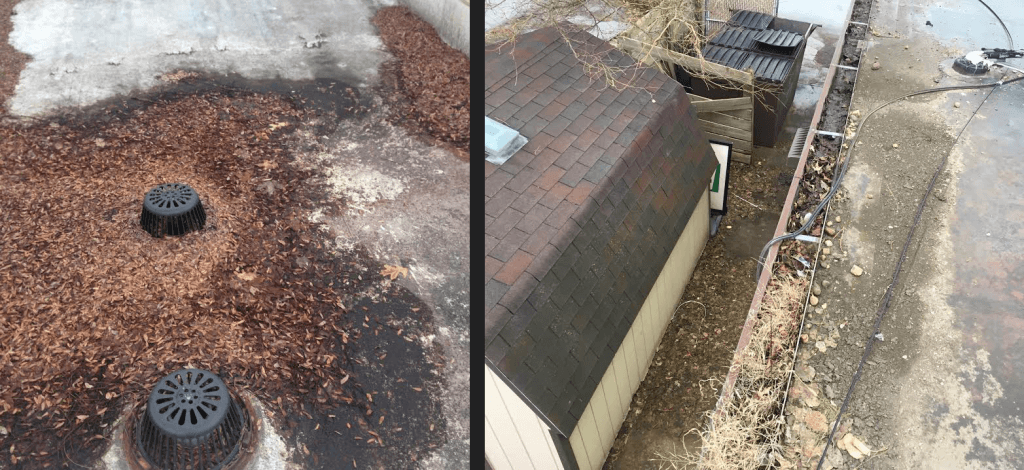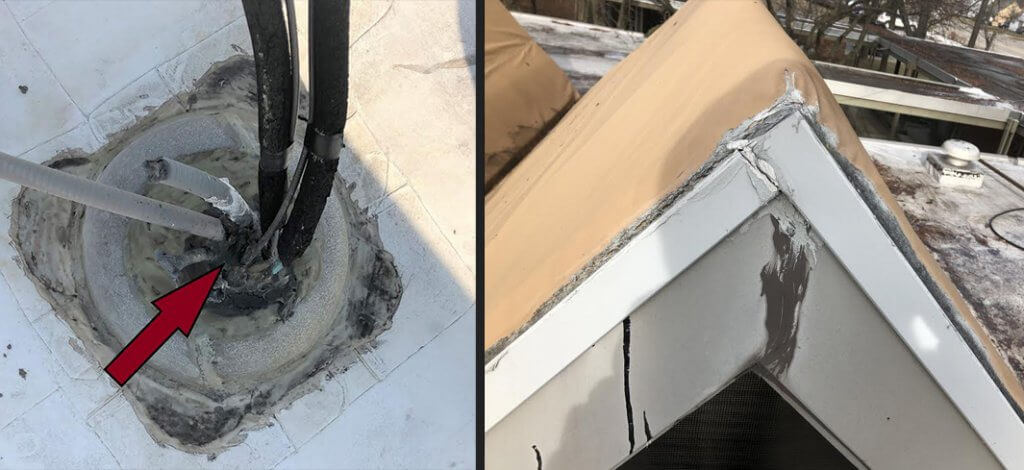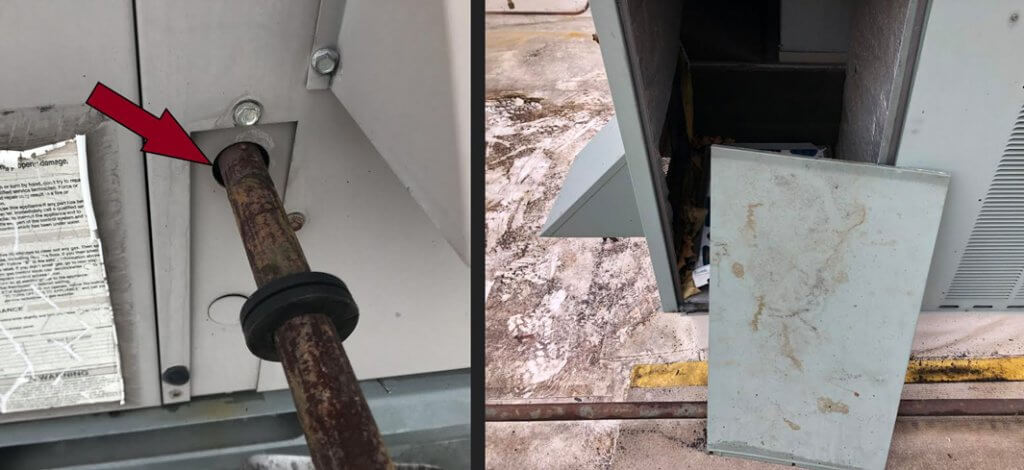From cars to swimming pools, preventative maintenance is something that’s always been
crucial in maintaining the integrity of any large investment. Your commercial roofing system is
no exception. In fact, your roof is protecting your people, products and/or expensive equipment,
so you want to be sure you’re keeping up with the proper maintenance even more so than other
investments. Many people don’t know that preventative maintenance program is required to
keep their roof warranty intact. In this article we will go through the importance of preventative
maintenance and how you can do something today to keep its waterproof integrity intact. Our
goal is to educate commercial roof owners and/or building managers on how to best utilize your
team efforts. If your roof experiences harsh winters and messy falls this article is definitely for
you. Weather conditions play a huge role in the overall health of your roof. For example, the
debris from Fall like branches and leaves can build up into your drainage system and create
pressure build up in your roof system. But by doing a regular checkup yourself you can avoid
harsh damage and bigger issues in the future. You must also keep in mind that if your roof did
not have a proper installation or design initially, these factors could also play a role in premature
deterioration of the roof.
Here are some common threats to your roof system:
● Ultraviolet Radiation
● Wind
● Rain
● Hail
● Snow
● Sleet
● Debris
● Tree Branches
● Leaves
● Clogged Drains
● Flashings
What Can You Do?
As a building owner or building manager there are some steps you can take to better assure the
health of your roof system. At ROOF Management we pride ourselves in educating our clients to
set them up for success. We also do this to help our clients avoid bigger issues with their roof by
keeping up with preventative maintenance.
Here are some important issues to be aware:
Spotting the Red Flags
It’s important to spot the red flags before your roofing issues become more critical. This helps
save you a lot of money and stress. A short look around your roof can help you locate any
potential problems that could lead to leaks on the inside. You should also check the drainage
system for any clogging or debris buildup that could allow water to pond on the roof. Another
thing you can do is to be sure that any external equipment on the roof should be secured tightly.
If possible, it would be good to check on the roof during the spring and fall seasons to be sure
your roof can withstand all weather. If you don’t have personnel in place to perform these
inspections, please contact ROOF Management for help.
What To Check For…
Here are some areas on your roof that are worth looking at if you are experiencing any issues
with your roof system and may be confused of what the source may be. These are good to
check on bi-annually even if you aren’t experiencing any issues. It’s important to assure the
health of your system before issues get to an unfixable point or create serious damage that will
cause a domino effect of a series of problems. Start with a checklist with what you find useful
from this article and get to work!
Drainage
To avoid causing water and other damage to your system you want to ensure you have a proper
path for water to successfully drain. This is probably one of the most important pieces of
maintaining a healthy roof that will promise a long and healthy life for your roof. Look for tree
helicopters, dirt, leaves, cottonwood and any other random debris that could cause water to
flood and/or not drain properly. Cleaning all roof drains and gutters from debris will ensure
positive drainage of water from your roof.

Sealants
Your sealants play a very pivotal part in your maintenance program. These areas take on
extreme stress and need to withstand the seasons throughout the year. If not taken care of,
sealants are prone to cracking, splitting, pulling away from walls and other surfaces. Whenever
you notice any of your sealants deteriorating you should start to consider replacing them to
avoid any other bigger issues down the line. This also applies for pitch pan fillers and caulking.
Be sure to thoroughly examine these during an inspection.

HVAC Units
Care must be taken to ensure that any small, sharp debris or extra screws are cleaned up and
removed from the area around your HVAC units. Check around RTU’s and air conditioning
equipment, mechanical penetrations and elevation changes, and areas of access. HVAC units
should be checked to ensure that the access panels are properly fastened in place, and that the
drainage lines are functioning properly. Clogged drain lines, holes and/or missing access
panels are items that allow water to leak into the interior of buildings.

Parapet Walls
If you would like to avoid any water penetration into your structure than the Parapet Walls will
also need to be inspected. Look for cracked and or open mortar joints, deteriorating copings and
any other signs of wear and tear. Examining the previously stated will help you avoid serious
harm to your roof structure. Some things that may be harmed or damaged are the insulation,
framing members and the fasteners in a mechanically attached roofing system. Moisture
penetration is NO joke!
Roof Tie-Ins
Roof Tie-ins are designed to resist any tension your roof might face. This is why maintenance in
this area is crucial. Throughout the season your roofing system will experience many different
forms of tension and compression as your building settles. Be on the lookout for any splitting,
gaps or cracking. Since tie-ins can be made from different materials, it’s important to know what
materials you are using and how to fix or replace them if there is a problem.
Documenting Roof Conditions and Historical Files
Another advantage you gain with a preventative maintenance program is creating a historical
file of your roof system. Through documented photographs of inspections, cleaning, and minor
repairs over the years, a detailed history is kept. This will help you better observe your roof
condition through the years as well as helping your roof contractor better assist you with any
issues. A Historical File is something your contractor will help you create with every visit. A
Historical file should consist of documented repairs, changes to your roof and any warranties
you have. The historical file should stay with the building owner or manager on-site. This will
help in planning and budgeting for any future large-scale repair or replacement when that
becomes necessary.
In Closing
In conclusion the most important piece of information to take out of this article is that
preventative maintenance is not only a crucial part of maintaining a functioning healthy roof but
will increase the longevity of your roofing system and save you money, by being able to spot
any issues before they grow larger.
Need some help?
If you’re in the Michigan area and need some assistance with any of your roofing issues or tasks
then ROOF Management has dedicated a maintenance team to specifically handle preventative
maintenance programs. We offer many programs depending on your specific needs. We
perform an initial inspection of each building to help us determine which program will work best
for you.
Some of the things we investigate are:
Type of drainage, general overall conditions, type of roof system, conditions of any roof
flashings, copings or other roof penetrations that may be present. We also judge the
surroundings to determine how much debris may end up on the roof and into the drainage
system.
All of this information is then compiled into a detailed report with photographs for your review.
Along with this report is our recommendation for maintenance on your specific building. In most
cases a program is designed around a Spring and Fall visit when it is most necessary. This
allows us to clean the gutters and roof drains in the Spring and then again after the leaves drop
in the Fall. Feel free to contact us with questions or for more information.
Phone number:
248-474-2767
Email:
info@roofmgmtco.com





